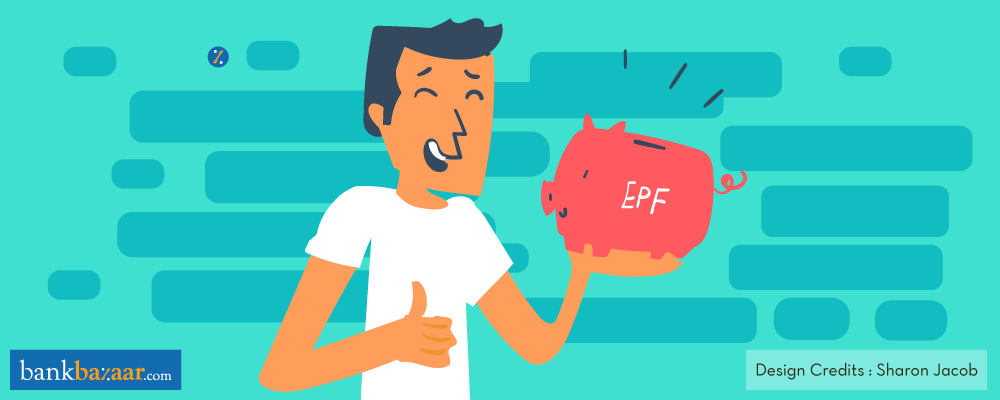The Employees Provident Fund Organisation of India (EPFO) recently introduced a new provision to its EPF withdrawal rules. Read on to find out what it is. You’ll love it!

The Employee’s Provident Fund (EPF) is part of your salary that is deducted every month and channelled towards your retirement fund. This is a retirement benefit scheme run by the Employees Provident Fund Organisation of India (EPFO). Any company with more than 20 employees is legally bound to register itself with EPFO and provide EPF benefits to its employees.
Withdrawals are generally not allowed from your EPF account, unless you are unemployed or want to be self-employed, etc. As per the rules, you can withdraw money from this account only if you have had no job for a period of two months and are without a job at the time of withdrawal.
However, the two months tenure proved a little difficult for people who came in need of money when unemployed. With this in mind, the EPFO on Tuesday said that individuals will be allowed to withdraw 75 percent of the available balance in their Provident Fund (PF) account if they are unemployed for more than a month.
“The PF is a nest egg for private sector employees for their retirement years. In order to curb people from dipping into their PF kitty before retirement, the Employees’ Provident Fund Organisation (EPFO) restricts partial early withdrawal to specific occasions. The new rule makes a person eligible to withdraw 75% of the PF money at the end of the first month of unemployment and the remaining 25% after two months of unemployment. However, this should be done only in extenuating situations,” said BankBazaar CEO Adhil Shetty.
The new rule offers some leniency and is much appreciated by EPF account holders. The provision to withdraw 100 percent of the EPF amount after two months of unemployment still stands.
Additional Reading: Everything You Need To Know About IEPF
To withdraw funds from your EPF account, you have to fill a declaration and provide a reason for the same. You have to fill Form 19, sign it and have it attested by your former employer or a gazetted officer in case your former employer is uncooperative. You will need to submit this form along with a letter stating that you are relieved from your services to the company and also a cancelled cheque from your savings bank account to the EPFO of your jurisdiction.
Other than the above scenario, there are many other instances when you are allowed to withdraw from your EPF account. For example, employees planning to settle abroad, or those who have landed jobs in a foreign country are eligible to receive EPF withdrawal immediately after registration. In this case, individuals will need to submit proofs like a copy of VISA or employment letter, as the case may be.
A lesser-known waiver to the waiting period is that a female employee can withdraw her PF money if she is leaving service for the purpose of getting married. The proof for submission here can be the marriage certificate or even the wedding invitation card.
You can also withdraw a portion of the EPF savings for the purpose of:
- Marriage or education of yourself, your siblings, or children.
- Addressing emergency medical expenses for yourself, spouse, children, or dependant parents.
- Repaying housing loans for a house owned by you, a spouse, or jointly by both of you. You can do this only after 10 years of service and contribution to EPF.
- Paying the costs of alterations/repairs to your existing home. You’ll need to have been in service and contributing for 5 years for alterations and 10 for repairs.
- If you’ve completed 7 years of service, you can withdraw 50% of your EPF contribution up to 3 times in your working life.
Additional Reading: How To Check EPF Claim Status Online?
EPF Contribution
When you start working, you and your employer both contribute 12% of your basic salary (plus dearness allowances, if any) into your EPF account. The entire 12% of your contribution goes into your EPF account along with 3.67% (out of 12%) from your employer, while the balance 8.33% from your employer’s side is diverted to your EPS (Employee’s Pension Scheme).
These funds are pooled together from many employees like yourself and invested by a trust. This generates an interest of 8% – 12%, which is decided by the government and the central board of trustees. The annual interest rate is available on the official EPF India website.
EPF is active every time you receive your pay. If you’re changing jobs, it’s important to also update your EPF information with your new company, giving them your EPF number so that they can continue the contribution.
“The PF is a security for the future and should be left untouched as far as possible. The EPF grows due to the power of compounding. So the longer the investment is kept untouched, the more it will amount to. So, until and unless there is an emergency, do not liquidate your PF savings,”said Adhil Shetty.
Additional Reading: Getting Your EPF E-Passbook Is Now Easy! Here’s How To Go About It
This was the latest update on your EPF account. If you’ve just withdrawn funds from your EPF account and are looking for great investment options then you’ve come to the right place. We have a host of options including Mutual Funds. Check them out now.